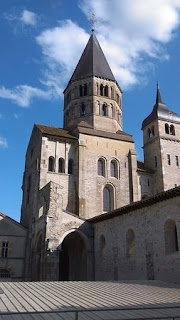So. The Cask of Amontillado. Just your basic, bury someone in your crypt alive story, and even then it was determined that this short story really wasn't as terrifying as others Poe offerings we've read. Here's the Playmobil recap. For extra viewing, here is the Basil Rathbone reading.
In the case of The Masque of the Red Death, my mad youtube skills failed. Most links were, quite frankly, disturbing-- more so than even I'm comfortable with. One of my children walked by as I was watching an animated version and she said "WHAT are you watching?" Oh, you know, just your typical animated blood fest. Here is a reading by Basil Rathbone. Bottom line for the moral of this story is you can't get away from Death. There's no hiding from it. Of course, I'd prefer less blood, but Poe... and if you are desperate to know how to make movie blood, a staple for the Gothic genre, here's Mark Gatiss (of Sherlock and Doctor Who fame and self proclaimed aficionado of the macabre) making perfectly tasty blood, otherwise known as Kensington Gore.
In the 1960s, Poe seemed to peak in some weird, campy popularity that seems incredibly, well... 1960s. An actor in particular, a Mr. Vincent Price, adored Poe and the macabre. In 1944, he starred in one of my favorite film noirs Laura and followed with villainous roles in House of Wax (1953) and The Fly (1959), garnering him the status of preeminent villain in all his Gothic/horror contrived glory. Under the direction of Roger Corman, he was cast in Poe stories:
- House of Usher (1960)
- The Pit and the Pendulum (1961)
- The Raven (1963)
- The Masque of the Red Death (1964)-- this one seems the most bizarre of them all
It should be said here that the screenwriters somehow stretched these short stories into full length films with varying degrees of success.
In 1970, Price was filmed in An Evening of Edgar Allan Poe, which showed him in a lavish dining room, with campy Gothic overtones (shocking, I know) and reciting the works The Tell-Tale Heart, The Sphinx, The Cask of Amontillado, and The Pit and the Pendulum. Given the sheer volume of Poe works Price made, it would be safe to say he was a fan.
Price's last feature film was Edward Scissorhands (1990), where he suffered his final film death as the inventor. Tim Burton was delighted to have Price in this film, and had already used the gruesome talents of Price several years before when Burton brought together his brand of creepy, with Poe, and the talents of Price. In 1982, Burton made a short film called Vincent, which referenced Poe's The Raven and was narrated by Price. This short film can be found at the link above or on the bonus features of The Nightmare Before Christmas.
Bringing the Gothic to a close, and moving beyond the morbid, the class watched the episode of The Muppets that starred Vincent Price. All tenants of Gothic fiction/horror are parodied and otherwise made palatable in these final clips:
Due to Spring Break, class continues next week with the stories Hop-Frog and The Island of the Fay.












